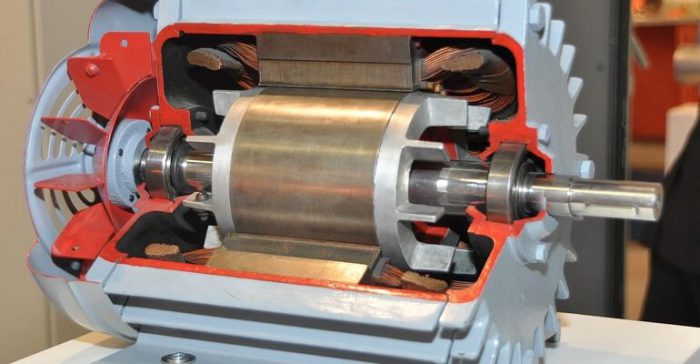Regulations look past motors to improve system efficiencies
Plant Engineering, May 6, 2016. Image credit: S.J. de Waard – CC BY-SA 3.0,
Electric motor system efficiency and power electronics are impacting future energy saving opportunities as attention moves from motor efficiency to motor-driven system efficiency. In the U.S., the first move was to apply motor efficiency regulation. The next step is addressing the system.
Stage 1: Motor as a component
U.S. motor efficiency regulation began in 1992. At this time the motor already included efficiency data on each nameplate. The U.S. Congress drafted legislative language that included definitions of products to be included as well as referencing test methods and efficiency levels. The motor community began a journey into federal regulation that continues today.
In 2001, motor manufacturers created an efficiency level “reach” that raised the efficiency levels above the federal requirement (NEMA Table 12-12). In 2010, this new level was added to a second round of regulation bringing the markets greater savings to a select category of motors know as Subtype 1 and Subtype 2. These categories impacted approximately 40% of the units sold each year. In 2014, a third round of regulation was released that will take effect June 1, 2016. This latest round of regulation essentially covers all polyphase motors from 1 hp (0.75 kW) to 500 hp (375 kW). This latest round of regulation was carefully constructed to expand the scope of products to be covered while paying particular attention to unintended consequences that would defeat the energy saving goal of the rule. The motor community worked diligently with the energy advocates and the U.S. Dept. of Energy to create a regulation that took into account mechanical and electrical issues that would undermine the regulation if an efficiency level were to be increased to a point that triggered any or all of the following 10 consequences.
Stage 2: Power drive system
The second stage is to create standards that quantify energy saving delivered by a power drive system. It becomes clear that the motor is a critical part of this system, but it only makes up a small percentage of the losses in the Stage 2 energy saving opportunity.
Stage 2 will leverage the motor, inverter, and controls system referred to here as the power drive system (PDS). Also, in consideration are the starters, torque transmission devices, and of course the load (pump, fan, compressor) which is now referred to as the extended product. While moving forward on this topic, it was discovered that it was necessary for a metric to move to losses versus efficiency. The reduction in losses as a result of process control through the use of a PDS delivers the reduction in kWh.
It is necessary to use loss reduction versus efficiency when considering total system energy savings. Considering an extreme case where the application requires a period of operation within its duty cycle at or near zero speed where the efficiency is 0% it becomes a little clearer that efficiency is no longer a meaningful metric.
The work that is now ongoing in NEMA’s WG 18 is to establish the losses generated at various operation points and determine the savings in energy as a result of using a PDS which includes the extended product. The system standard establishes a series of 8 points that can be used to evaluate the energy savings.
